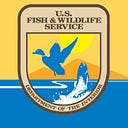10 things you didn’t know about nature in Nevada

Nevada is famous for its casinos and nightlife, but not necessarily for its striking geography and biodiversity (and it should be, to be honest).
Here are 10 things you didn’t know about plants, wildlife and their habitats in the Silver State.
10. Mountains.

Nevada has 314 named mountain ranges — more mountain ranges than any other state — and 35 peaks over 10,000 feet in elevation. Because of the dramatic geography, the state has many pockets of unique habitat for plants and wildlife to call home.
9. It’s really dry here.

Nevada is the driest state in the nation with a statewide average of 10 inches of precipitation per year. Arizona is the second closest with a statewide average of 12 inches of precipitation per year!
8. Butterflies.

Nevada ranks 8th for the number of butterflies found in a single state.
7. Mammals!

From mule deer to elk to ground squirrels to desert bighorn sheep, Nevada is 9th among all states in mammal diversity.
6. Also, BIG fish.

Measuring up to 45 inches and weighing up to 50 lbs, the Lahontan cutthroat trout, aka Nevada’s state fish, is the largest inland cutthroat trout in the world.
5. Endemic species are real here.

Nevada ranks 6th out of all states for the number of endemic species (aka plants and wildlife that only live in a certain area) with…
4. …309 unique Nevada species (that we know of)!

Nevada has 309 species which are not found anywhere else, including desert fish like the Devil’s hole pupfish and desert dace, a variety springsnails and amphibians like the adorable Dixie Valley toad.
3. Basically, a lot of plants and animals call Nevada home.

Nevada is 11th among all states in total diversity of plants and animals. We’ll take it.
2. Hot springs, anyone?

With over 300 hot springs, Nevada is home to more hot springs than any other state in the nation. Some of Nevada’s most rare and vulnerable species, like the Devils Hole pupfish, railroad valley springfish and springsnails, depend on spring systems for survival.
1. Because of all the unique pockets of habitat and the high number of endemic species with small home ranges, Nevada is 3rd out of 50 states for having the highest number of species at risk.

The bottom line — Nevada is a place of adventure and extremes, and home to many plants and wildlife, many of which aren’t found anywhere else in the world.

We hope this story spreads some appreciation for nature, both big and small, found in the Basin and Range state.
Written by Joanna Gilkeson, public affairs specialist, Reno FWO
